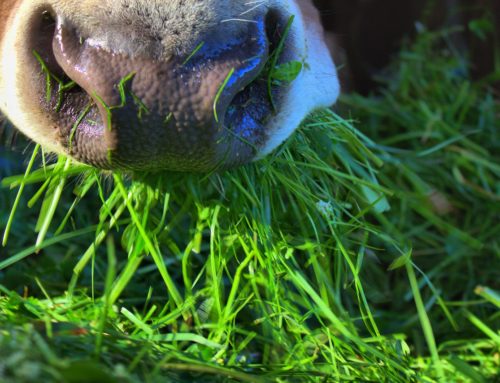High protein forage can increase rates of gain, benefit soil
Respect it, but don’t fear it. That’s the message from cattle producers and beef specialists alike who through years of experience and research appreciate the value of grazing cattle on pure or percentage stands of alfalfa.
Properly managed alfalfa m
• Improved weight gains on all classes of cattle (gains of 1.5 to 2 or more pounds per day can be expected);
• Adding fertility to the soil with a nitrogen-fixing crop;
• Creating a hedge against poor forage production during dryer growing seasons; and
• Increasing plant biodiversity to benefit soil health.
Yes, there are circumstances when turning cattle into a lush stand of alfalfa at the wrong time and perhaps with the wrong class of cattle can result in bloat. But paying attention to a few production and management principles can greatly reduce the risk of bloat and provide the opportunity to capture the benefits.
While pure stands of alfalfa pasture can be very productive, they may be more appropriate for end use as high-quality hay or silage for dairy cattle. From a beef cattle grazing perspective, most interest these days is in 30 to 60 percent alfalfa grown in a blend with grass forages and/or in combination with other legume species.
“We’ve looked at alfalfa in several different grazing studies over the years, most often used in a binary mix (alfalfa/grass forage blends),” says Bart Lardner, formerly research scientist at the Western Beef Development Centre, now a professor in the Department of Animal and Poultry Science at the University of Saskatchewan. “And the alfalfa component produces several benefits. The industry has lost a lot of money over the years by avoiding alfalfa, partly due to unwarranted fear.”
Timing is one of the keys to reducing the risk of bloat, says Lardner. In high percentage, alfalfa stands to avoid grazing alfalfa before and up to the bud stage, when plants can be lush and tender. And avoid introducing cattle to an alfalfa pasture when the dew is heavy or while it is raining. As plants mature and develop more fiber, the risk of bloat greatly decreases as the stand reaches 30 to 40 percent flower stage. And including alfalfa in a pasture forage mix that includes more fibrous grasses also provides cattle with a wider feed selection than just straight alfalfa. “It may take some experience for people to find their comfort level for grazing alfalfa, but it is an excellent forage,” he says. “Yearlings will gain nicely on alfalfa with no comparison to grazing straight grass.”
Alfalfa grazing management tips:
1. Never turn hungry livestock into a pasture containing a high proportion of bloat-causing plants.
2. Fill animals with dry hay or grass pasture before beginning to graze high bloat-potential pastures.
3. Avoid turning animals onto fresh, high bloat-potential pasture that is moist with dew, rain, or irrigation water. Both rates of intake and initial rate of digestion are higher from moist plants, causing more rapid initial digestion.
4. Never allow animals grazing high bloat-potential pasture to get so hungry that they consume too much in one feeding. Always have sufficient feed available.
5. Make paddock rotations mid-day or later to help minimize moisture and increase plant carbohydrate concentration.
6. Avoid dramatic changes in forage quality when rotating from paddock to paddock by leaving an adequate residue.
7. Observe livestock closely the first several days and remove any “chronic-bloating” animals.
8. Avoid grazing legumes before they begin to bloom. Make closer observations for bloat when many plants are at a younger growth stage.
9. Manage grazing to encourage livestock to consume low- or non-bloating plants and plant parts (such as an alfalfa/grass forage blend) rather than just succulent top growth. For example, use daily strip grazing or use high stock density in multiple paddock systems rather than continuous stocking.
10. Once grazing begins, don’t remove animals from pasture or make frequent, major changes in the type of pasture being grazed unless animals have greatly distended rumens. Mild bloat is common on high bloat-potential pastures. Frequent diet changes prevent rumen microbes and animals from adapting to bloat pastures.
11. Be extra observant for cattle bloat when high bloat plants show a rapid flush of growth such as during cloudy, wet periods in the spring and after a plant stress event such as hail or drought.
12. Delay grazing high bloat-potential plants for three to five days after freeze damage.
13. Avoid grazing alfalfa stands in September as plants need adequate carbohydrate reserves for overwintering. Can graze above ground biomass after final fall killing frost.
14. Graze with animals that have smaller rumen capacities, like yearlings and calves, rather than mature cows.
15. Talk to your veterinarian about the advisability of using a product like Alfasure (mix with water to prevent frothy bloat). (In the U.S. look for Bloatguard.
via Fear of Bloat Costs More Money Than Actual Cases of Bloat — On Pasture


